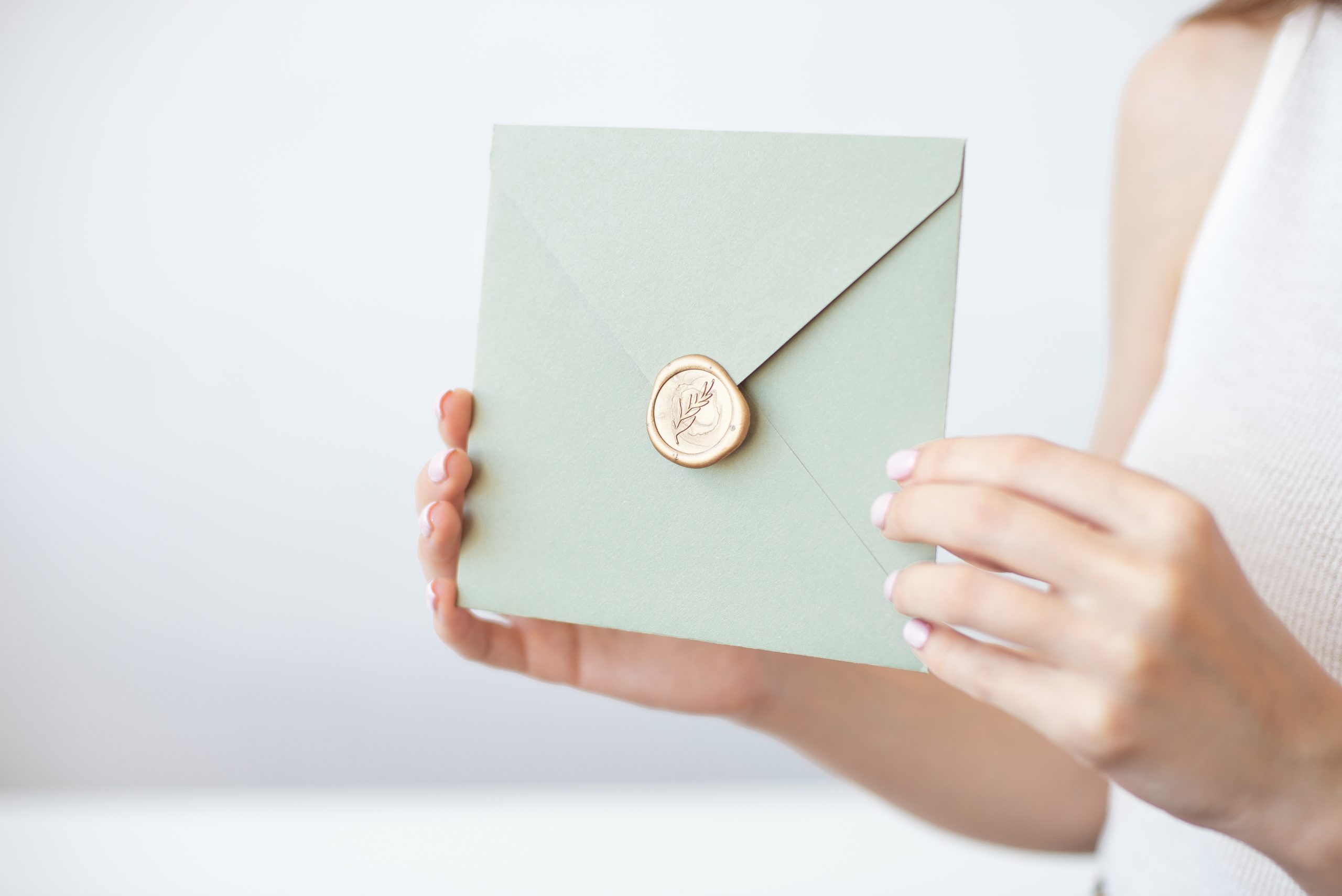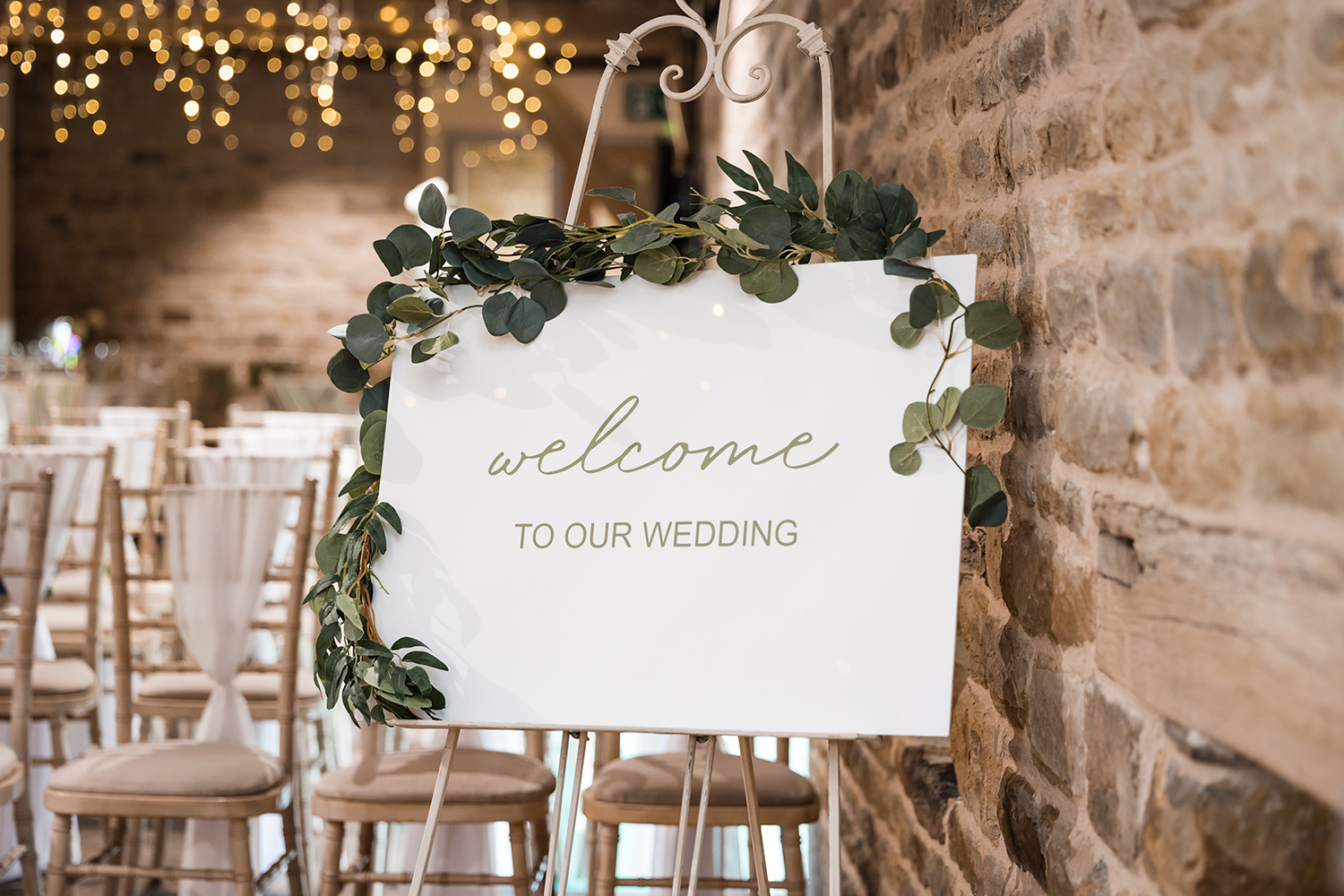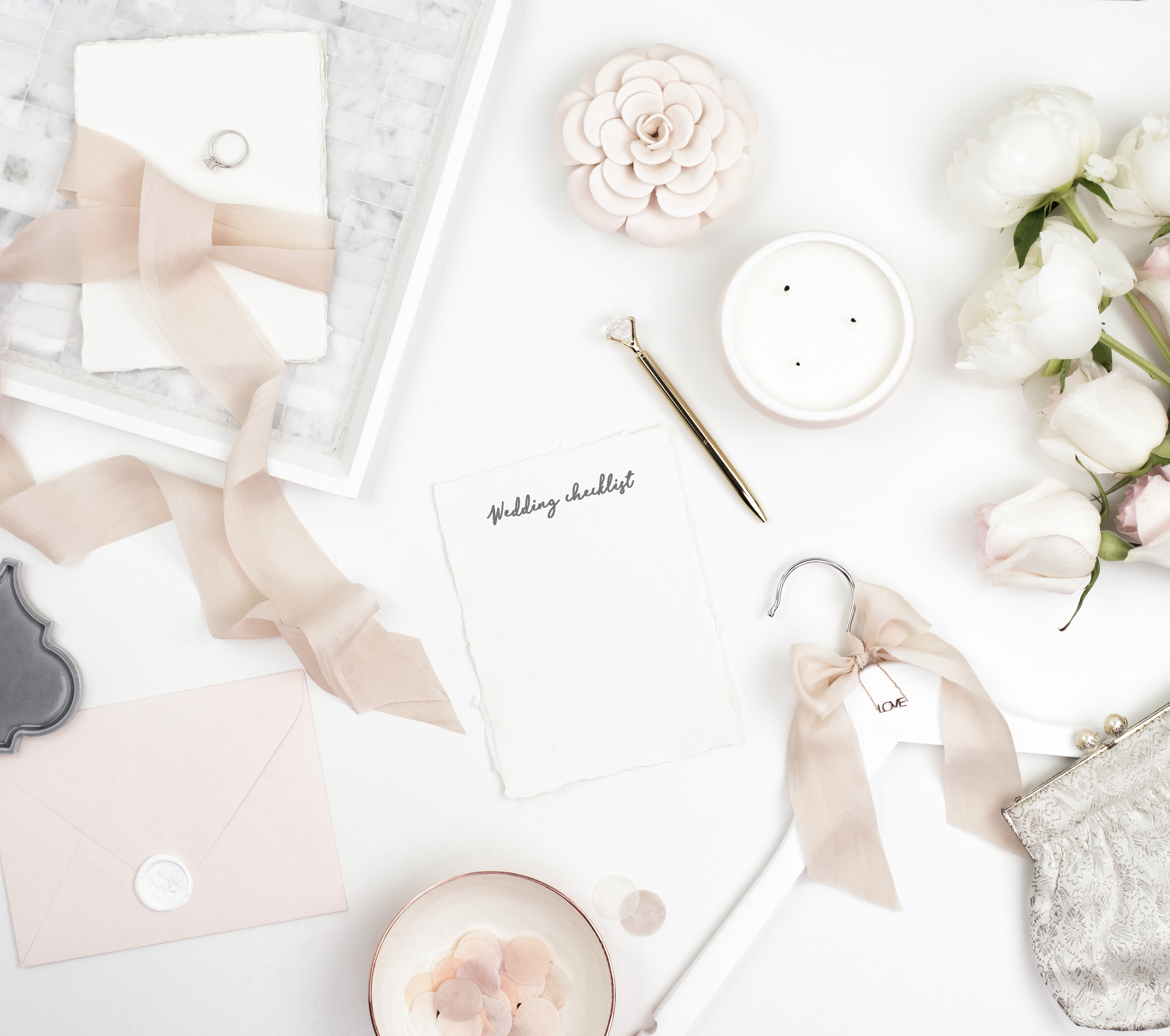Wedding invitations are more than just logistical tools—they’re a first impression. Whether you’re planning a formal celebration or a small backyard gathering, how you address your invitations reflects your style, sets the tone, and shows respect for your guests. Thankfully, modern etiquette has made things a little more flexible and inclusive, which means couples can approach the process with both certainty and ease.
We’ve put together a helpful guide for navigating modern invitation etiquette without stress to assist you with the process. Check out our tips for addressing envelopes, including diverse family dynamics, and managing both printed and digital invites so you can get your invites sent out with confidence.
Keep It Clear and Kind: The Spirit of Modern Etiquette
Gone are the days of rigid, one-size-fits-all invitation rules. Today, etiquette is about clarity, consideration, and making your guests feel welcome. While formality is still appreciated in some settings, the emphasis has shifted toward personalization and inclusivity. Think of addressing your wedding invitations as a thoughtful gesture—it’s about showing your guests that you know them, care for them, and are excited to include them in your big day.
Outer and Inner Envelope Formatting
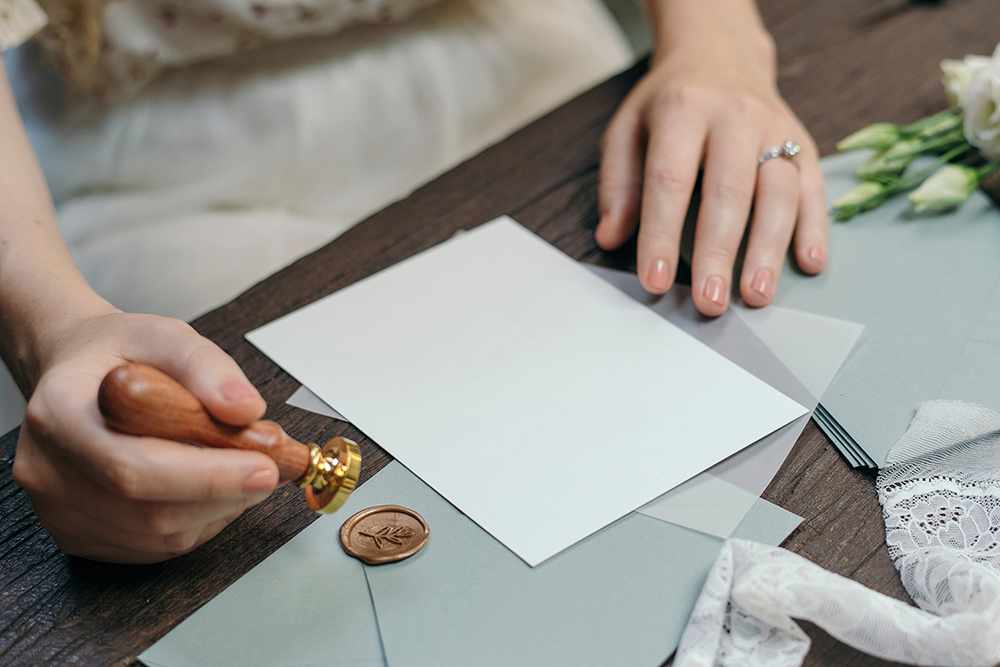
If you’re using traditional printed invitations, you may opt for both outer and inner envelopes. Here’s how they differ:
- Outer Envelope: Includes full names and the mailing address.
- Example: Mr. Jonathan Reyes and Dr. Elise Carter
2108 Coastal Drive
Charleston, SC 29401
- Example: Mr. Jonathan Reyes and Dr. Elise Carter
- Inner Envelope: More informal and doesn’t include addresses. This is where you might add children’s names or clarify who is invited.
- Example: Jonathan and Elise
Max and Ava
- Example: Jonathan and Elise
If you’re skipping inner envelopes (as many modern couples do), you can still include all household members on the outer envelope or specify names on the RSVP or details card.
Addressing Unique Situations With Ease
Modern etiquette embraces today’s varied relationship structures and family dynamics. Here’s how to approach some common situations:
Same-Sex Couples
List names alphabetically or in the order that feels most natural to the couple—there’s no required gender hierarchy.
- Example: Mr. Alex Hughes and Mr. Jordan Taylor
- Example: Mx. Jamie Lee and Ms. Sam Rivera
Blended Families
If you’re inviting children, include their names either on the inner envelope or under the parents’ names if you’re not using inner envelopes.
- Example: Mr. and Mrs. Ryan King
Olivia, Ethan, and Sophie
Divorced Couples
Address each person separately and avoid combining names unless they specifically live together or have remarried each other.
- Example: Ms. Diane Murphy
Mr. James Murphy (sent separately)
Professional Titles
Use titles like Dr., Reverend, or Captain when appropriate. If one partner holds a title, that title should come first.
- Example: Dr. Caroline Kim and Mr. Marcus Lang
- Example: The Reverends Sarah and Michael Bennett
Making Room for Digital Invitations

If you’re opting for digital invites or using them for some of your guests, it’s still important to follow etiquette basics:
- Use full names in the email or subject line to personalize the message.
- Avoid mass-forwarding. Send individual messages or use platforms that allow for personal touches.
- Double-check email addresses for accuracy and typos.
- Provide clear RSVP instructions and deadlines, just as you would for a paper invite.
- For older or more formal guests, consider pairing a digital invite with a personal note or follow-up call.
Quick Tips for Addressing Envelopes
- Always spell out full names, including middle names if known. Avoid using initials.
- Spell out addresses in full: “Street” instead of “St.” or “Avenue” instead of “Ave.”
- Use numerals for house numbers, but spell out street names if they include numbers (e.g., “One Hundred Fifth Street”).
- Avoid abbreviations where possible, except for “Mr.,” “Mrs.,” or “Dr.”
- Double-check spelling, especially for less familiar names.
Common Mistakes to Avoid
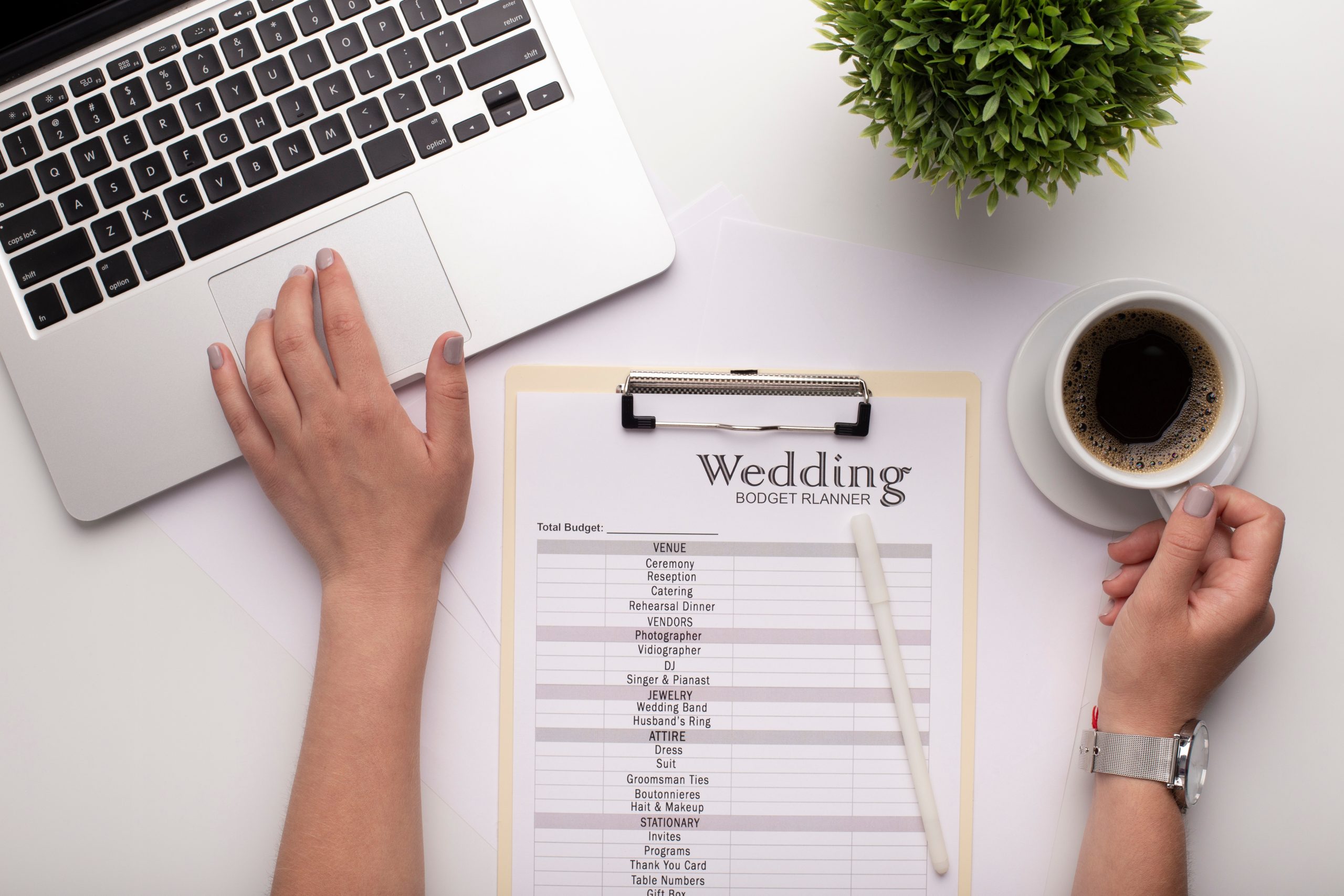
Even with modern etiquette being more relaxed, some common pitfalls can still lead to awkward moments. Here’s what to watch out for:
- Assuming who’s invited: Always be specific. If only certain members of a household are invited, make that clear on the envelope or insert card.
- Misspelling names: Triple-check your guest list for accuracy. If you’re unsure of a spelling or title, it’s worth asking discreetly.
- Mixing formality: If you’re hosting a formal wedding, keep titles and formatting consistent across all invites. Casual weddings allow for more relaxed language, but consistency still matters.
- Forgetting children: If kids are welcome, list them clearly. If not, consider a polite note like “Adult-only celebration” on the details card.
- Overusing labels: Don’t stress about perfection—labels like “Mx.” or “Dr.” are great when relevant, but not always necessary. Use what feels respectful and appropriate.
Addressing your wedding invitations doesn’t have to be overwhelming. Modern etiquette gives couples the freedom to communicate clearly and thoughtfully, whether through traditional mail or digital platforms. Take the time to learn your guests’ preferences, get names right, and format everything with care—it’s a small effort that goes a long way in making your guests feel honored and included on your big day!
